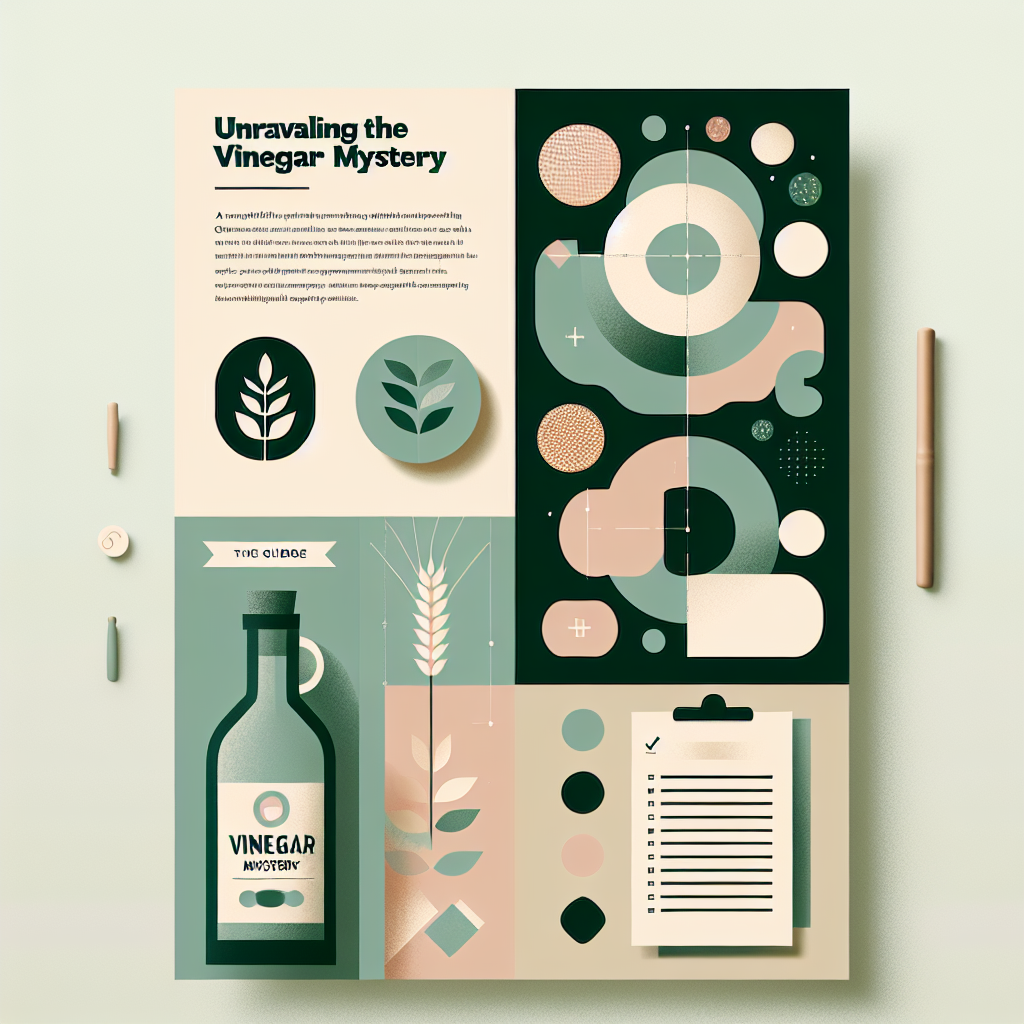Isn’t it funny how food, one of life’s simplest pleasures, can also be a source of great confusion, especially when it comes to maintaining a gluten-free lifestyle? I have to confess, I, too, have found myself scratching my head, despite having been on this incredible journey for some good number of years now. My curious mind never ceases to pose questions like, ‘Can I have this condiment?’ or ‘Is this product completely gluten-free?’.
Today, I intend to unravel some of these complex threads tied around a dietary staple that often sparks questions from our gluten-free community — Vinegar! Many of my valued readers have been wanting to know, ‘Is Vinegar gluten-free?’. It’s a valid question because vinegar is so widely used — from dressings to condiments, and even in cleaning products! Let’s not just internalize our confusions, but challenge them and seek answers together.
First, let’s recall how we recognize a food product as gluten-free? According to our in-depth guide from last month on the [basics of identifying gluten-free products](blog_link), products are generally considered to be free of gluten if they have less than 20 parts per million (ppm) of gluten. Anything higher, and they’re officially not gluten-free.
Now, vinegar, like our grandmas’ age-old preserves, undergoes fermentation. This raises questions about ‘Is there a possibility of gluten sneaking in unknowingly in the process?’ Understandably, since many fermented food products could potentially include gluten-containing grains, our anxiety is not unwarranted.
Let’s dive in. By and large, most vinegar types are, in fact, considered gluten-free. One reason for this is that the lengthy fermentation distillation process, typically used in vinegar preparation, removes gluten proteins — overtaking the 20 ppm gluten limit mentioned above. However, the exception to this rule lies with malt vinegar, which is made from barley, a gluten-containing grain. The maltose in the barley doesn’t react completely in the fermentation process, which may lead to residual gluten.
Now, what about the ubiquitous apple cider vinegar and its processed cousin, the white vinegar? If you’ve ever found yourself wondering whether your favorite apple cider salad dressing is a safe bet, breathe a sigh of relief! According to our previous blog post about [Popular Gluten-Free Foods and Ingredients](blog_link), both apple cider vinegar and distilled white vinegar are safe, as they’re derived from gluten-free sources i.e., apples and grain or petroleum spirits, respectively.
(It’s important to underline here the word, generally. Please remember each person’s sensitivity to gluten varies. While some may not react to a product with less than 20 ppm gluten, others might still experience symptoms.)
Why stop now, right? Let’s quickly touch upon another category of vinegar – the fancy and flavorful world of specialty vinegars. The likes of Balsamic, Sherry, or other infused vinegars offer a sweet, tangy, or spicy twist to our dishes. Now, you’d generally assume that they are gluten-free. But, hold the thought and read the label! Some manufacturers might add coloring or thickeners which could contain gluten. So when in doubt, always remember to read, and then eat!
Let’s not also forget specialty Asian vinegars like rice vinegar (which is gluten-free), often used in sushi rice, dipping sauces, marinades, and pickles. But caution: figuratively wear your reading glasses and carefully scan the label. Some Asian vinegars may come pre-flavored or blended with other vinegars, which could potentially include gluten.
In conclusion, most vinegars are generally safe to use in a gluten-free lifestyle, with the exception of malt vinegar and other specialty vinegars where you must read the labels carefully. One approachable rule of thumb is, if it’s clear and you can see through it, it’s most probably safe to use. If it’s got color and you can’t see through it, check the ingredients.
I hope this post has demystified some of the complexities around vinegar for those on a gluten-free journey. As I always emphasize, it’s our shared experiences and collective wisdom that make us one big happy gluten-free community. I’d love to hear your thoughts or questions about this topic – was there anything that surprised you, or something else you might be curious about? Feel free to drop your thoughts in the comments below!
As they say, food is fuel, and knowledge is power. Here’s to all of us powering through another day in our beautiful gluten-free life, one vinegar-infused dish at a time!
Stay well and keep on learning,
Claire
**Category: Educational Guides**


